
by Sandra Gulland | Mar 10, 2018 | Adventures of a Writing Life |
{Portrait of Robert Cheseman (1485-1547) by Hans Holbein the Younger. Might this be a model for my heroine’s father?}
I’m at the beginning of writing my next novel, and it’s a joy. I feel happy as a kid in a sandbox. It’s a slow process of discovery, and I expect it to take all year.
The things about my writing process that never change
This will be my seventh novel (ninth, counting the two thankfully unpublished ones), and there are a few things that always remain the same:
- I always feel like a novice starting out.
- I always change my method.
- I always experiment with process.
Story Genius: a great book on writing
This time I’m following the advice given in Story Genius; How to Use Brain Science to Go Beyond Outlining and Write a Riveting Novel (Before You Waste Three Years Writing 327 Pages That Go Nowhere) by Lisa Cron.
By following, I mean that every time the author writes WHAT TO DO, I do it.
Here’s an early example from page 52:
WHAT TO DO Now, you try it. Write a What If that’s as fully fleshed out as you can make it, but still concise.
Here’s another example from page 118:
WHAT TO DO Now it’s your turn. Your goal is to zero in on three turning point scenes that will yield the most story-specific info, the most potent grist for the mill, so that you can, indeed, begin your novel in medias res.
The point of Story Genius is to identify the moments in your main character’s past life that result in an emotional wound so deep that it will propel her (and us) through the novel. It’s a slow process of discovery, but very worthwhile.
I’m at page 194 now, and at this point I’ve written three pivotal scenes from my main character’s early life, an opening scene and a critical scene at the end of the novel. (Cron makes it clear that all of this will inevitably change.)
Getting into the nitty-gritty
Now the task is to begin to “blueprint” the novel, first by setting up folders for each character, for scenes, for ideas, and for the world the story unfolds in. I plan to do all this in Scrivener, but I’m beginning by exploring my characters in more depth.
This, alone, will take time, but it’s truly a pleasure. In my next blog post, I intend to share the tools I have used in the past to develop character, along with some excellent new tools I have discovered.
SaveSave
SaveSave
SaveSave
SaveSave
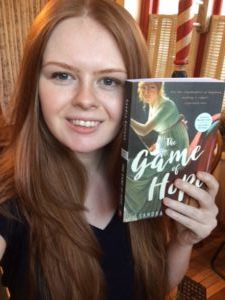
by Sandra Gulland | Feb 27, 2018 | Adventures of a Writing Life |
I’ve a newsletter about to go out, and I want to remind my wonderful readers who aren’t on my newsletter mailing list that you’re missing a chance to win one of my books — or (for the first time!) win an Audible edition of the entire Josephine B. Trilogy. The choice would be yours.
Click here to sign up. (Of course, you can unsubscribe at any time.)
Wonderful early reviews for The Book of Hope
Some readers have received an Advance Readers Copy (an “ARC”) of The Book of Hope, or read a free copy on NetGalley. It’s not possible for them to post reviews on Amazon until publication day, but it is possible to post a review on GoodReads and NetGalley.
It’s exciting (and anxious-making) to see early reviews coming in. My favourite so far is this one from Chelsea M. on NetGalley:
“Loved this read! It had me hooked!”
Swoon. That’s the best review a book can get, in my opinion. Thank you, Chelsea M., whoever you are.
Beta reader love
Here is a photo of one of my wonderful Beta Readers, Vanessa Van Decker, with the Canadian ARC of The Book of Hope.
Vanessa wrote that she was moved to tears to see the book. I myself was moved to tears to see the photo (above) of her smiling face with The Game of Hope in her hand.
Readers are so very special, and my team of young Beta Readers who read and commented on the early drafts of this novel were absolutely amazing.
An idea
Early readers: send me a selfie with The Game of Hope and I’ll post it to my website. A photo of the chocolate madeleines you make would be extra special. :-)
Why pre-order?
Pre-orders inform a publisher that the book is going to sell well, which publishers in turn communicate to bookstores. In short: it’s a very nice thing fans can do to help both a book and an author.
- Amazon.ca (due out May 1, in time for Mother’s Day, hint, hint :-)
- Amazon.com (due out June 26, in time for summer reading :-)
For more buying options, click here.

SaveSaveSaveSave
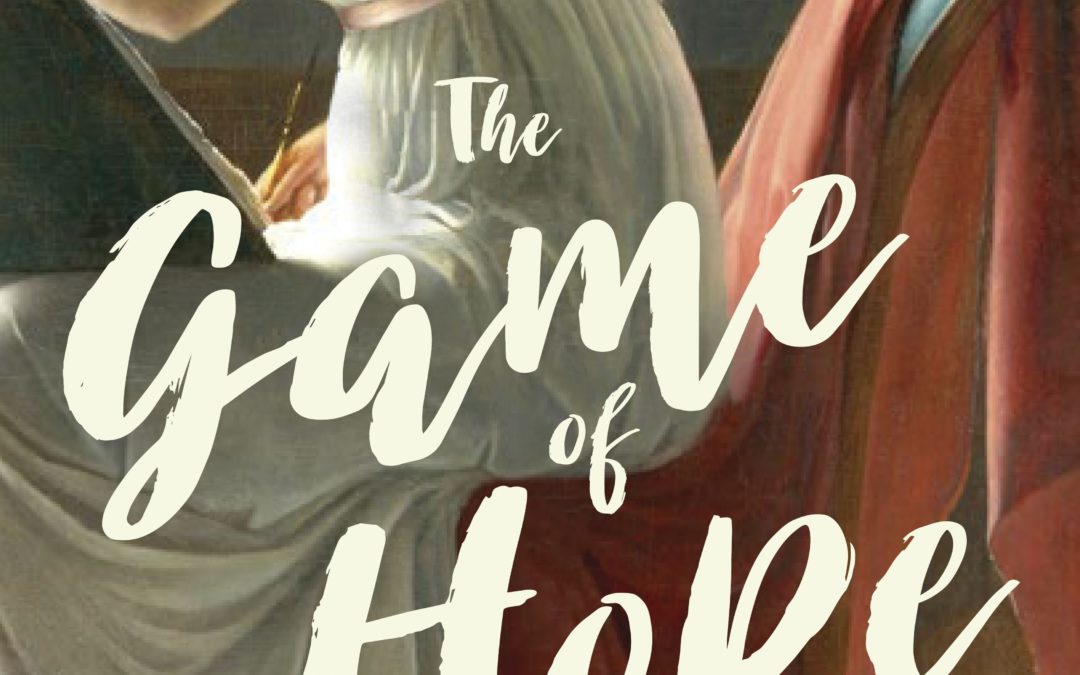
by Sandra Gulland | Jan 30, 2018 | Adventures of a Writing Life |
I was thrilled to read this lovely review of The Game of Hope on Net Galley. Here are some quotes:
Sandra Gulland demonstrates a masterful grasp that she has on history in her book The Game of Hope. While some authors struggle to convince their audience that they are educated in history and to fully immerse their readers in their story, Gulland has no problem displaying her understanding of post-revolution France and therefore invites her readers into a well-developed universe of Hortense de Beauharnais.
This book is well written for younger audiences of teenage girls, connecting them to the past with common issues that all preteen girls face in a timeless fashion. Gulland does not pump Hortense’s 1780 mind full of 2017 ideas, which is a genuinely refreshing change to the typical YA historical novel.
… for most preteen girls, this is still a wonderful introduction to history through the eyes of someone just like them, who truly lived, breathed, thought and felt in the same ways that they do.
How to get a copy for yourself
Should you wish to read The Game of Hope, you can request a copy on Net Galley in exchange for a review:
(My apologies: earlier I had posted that a copy of the book would be free. Well, that is true, it would be free, but it’s up to the publisher to decide who will receive the free copies, and I don’t know what their criterion is. I’m sorry if I dashed your hopes. I was fairly excited about it myself.)
But if, by hook or by crook, you do get a copy of The Game of Hope, and if you love it, I would really appreciate if you would post the review on Amazon and/or Goodreads. Reviews on these sites really matter, especially before a book is actually published.
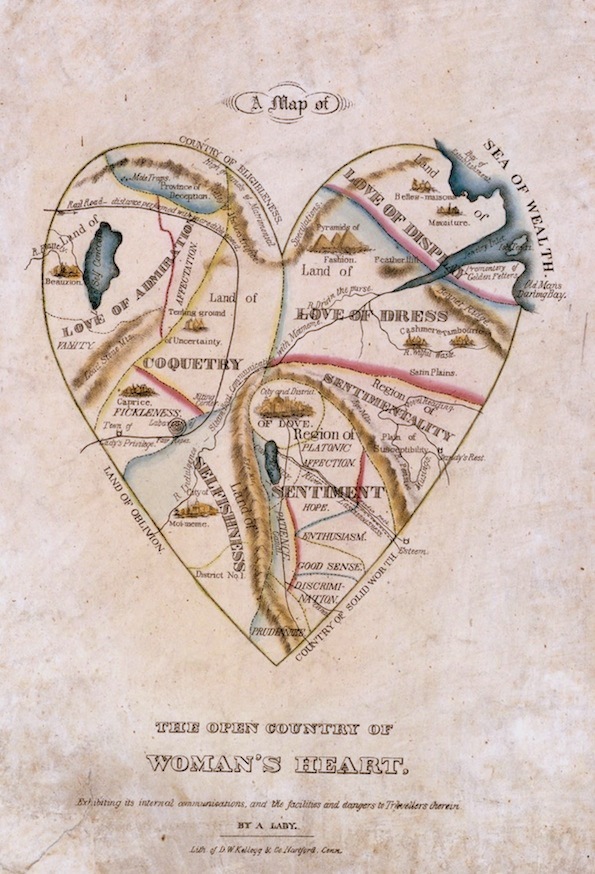

 SaveSaveSaveSaveSaveSave
SaveSaveSaveSaveSaveSave
I wanted to simply put hearts at the end of this blog post in response to my request for posting reviews (it’s never easy for me to ask), but I couldn’t resist looking for something historical. This is a 19th-century map of a woman’s heart. I like that it’s described as “open country.” (I wonder what such a “map” would look like today.)
More anon … and here come those hearts!

SaveSave
SaveSave
SaveSave
SaveSave
SaveSave
SaveSave

by Sandra Gulland | Dec 30, 2017 | Adventures of a Writing Life |
Are you a getting-things-done systems junkie? I am, and I thought I had my personal system settled once and for all until I took a Tim Grahl course on being a productive writer. Yeah, I know, my sixth novel will be published this coming spring, so some might think I already am productive. Not so! It takes me three to five years to write a novel, and I find that I’m constantly chasing my tail. I’m not getting younger and I have a number of books I want to write.
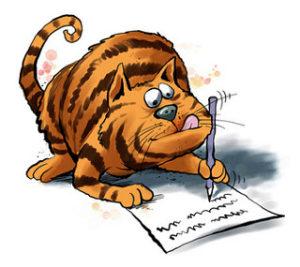
So here is my current system, in short:
I use the Things app as a database for recording the procedures of those chores I do rarely (like taxes) — things that I forget how to actually do. Keeping an itemized procedures list means I don’t have to reinvent the wheel each time. Time saver!
I use Levenger Circa notebooks which are handy because you can add pages and take them out. I would stick scraps of little post-its with To Do items on them onto the notebook pages. The problem was that I rarely looked at all of them, so some important items were forgotten. Also, I was drowning in scraps of tiny post-it notes.
One thing that has worked for years: I restricted my daily schedule and things I aimed to do onto a 3×3 post-it. (I’m partial to white, which I have to order.)
The new and revelatory addition to my system is using The Autofocus Time Management System. I tend to stall when faced with doing something I’m just not into doing.This system solves that problem because there is always something I’m inspired to actually do. Also, I tend not to forget things. I recommend it!
Good luck! I’m curious to learn your tips. If you use this system and like it, let me know.
Happy New Year!

SaveSave
SaveSave
SaveSave
SaveSave
SaveSave
SaveSave
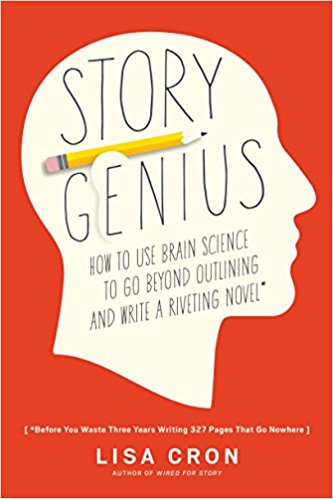
by Sandra Gulland | Dec 16, 2017 | Adventures of a Writing Life |
Every stage of writing a book is a challenge—the beginning, the middle, and the end—but I think figuring out how to begin to write a book might be the most difficult.
I’m at the beginning stage of writing my next novel now. I’m going to use Scrivener for this one, and so I have a lot to learn. It’s coming.
I’ve started etching out a plot using plot “beats” I’ve gleaned from Blake Snyder’s Save the Cat.

Yet I’ve been floundering. I’m accustomed to writing biographical fiction, with reams of biographies to work from. That has its own challenges, certainly, but for me, the free fall of a novel based on someone about whom there are only a few paragraphs written—and whose existence is debated, at that—is even more challenging.
I’ve discovered a book that is excellent for the pre-plot stage: Story Genius: How to Use Brain Science to Go Beyond Outlining and Write a Riveting Novel (Before You Waste Three Years Writing 327 Pages That Go Nowhere).
I’ve resisted this book because it felt too gimmicky, but it was recommended by writers I respect and admire, and so I’m giving it a try. I’m impressed! It’s helping me to closely define my protagonist before I construct the plot. It doesn’t make it easy (nothing can), but it’s highly worthwhile. If you are at the pre-plot stage—or if you are having difficulty knowing how to begin writing—I recommend you read this book. Better yet, do the exercises.
How do you begin writing a book? What works for you?
SaveSave
SaveSave
SaveSave
SaveSave
SaveSave
SaveSave
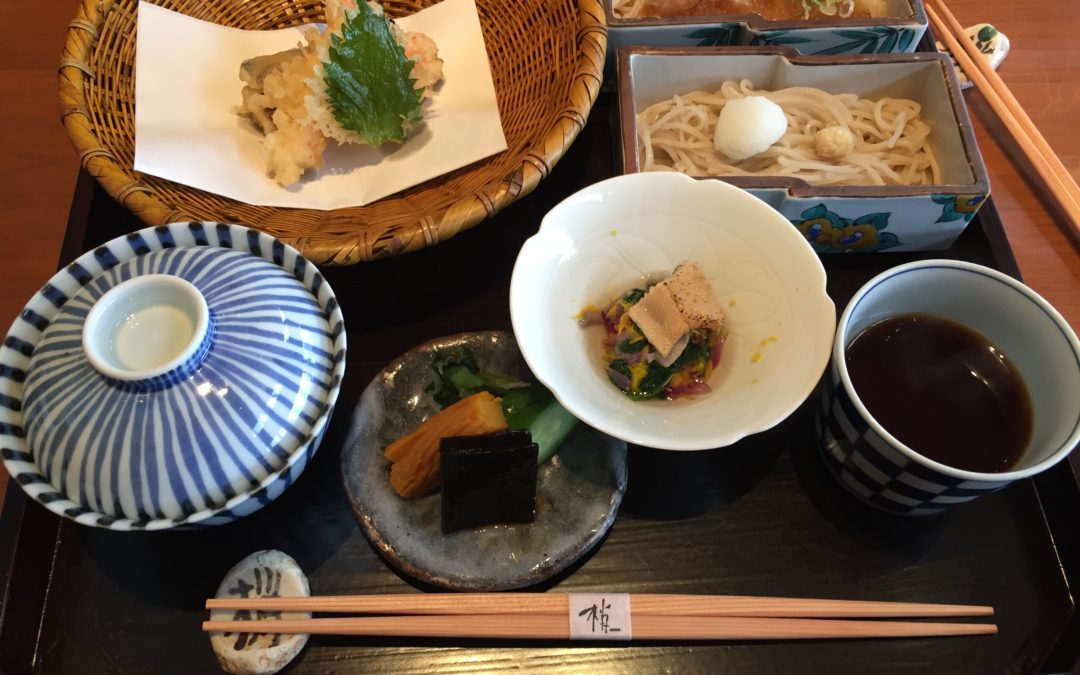
by Sandra Gulland | Nov 30, 2017 | Adventures of a Writing Life |
My husband and I took a long trip this fall, to Japan for three weeks. It was fantastic! We are culinary travelers, and Japan was a treat.
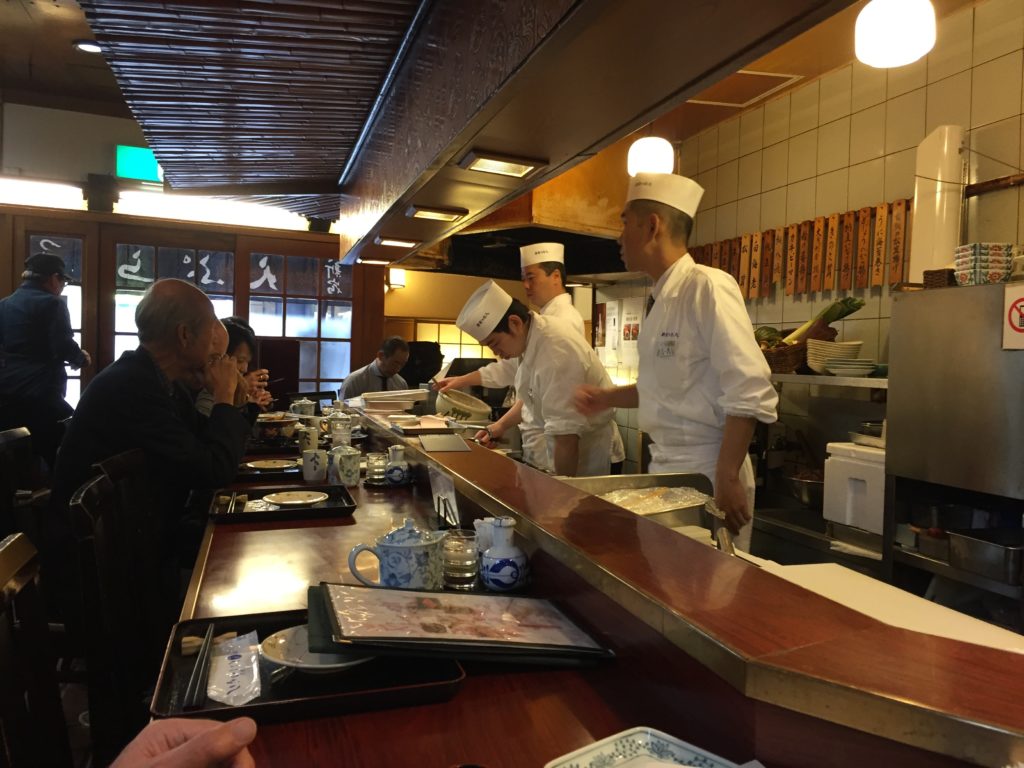
We often chose to sit where we could watch the cooks at work.
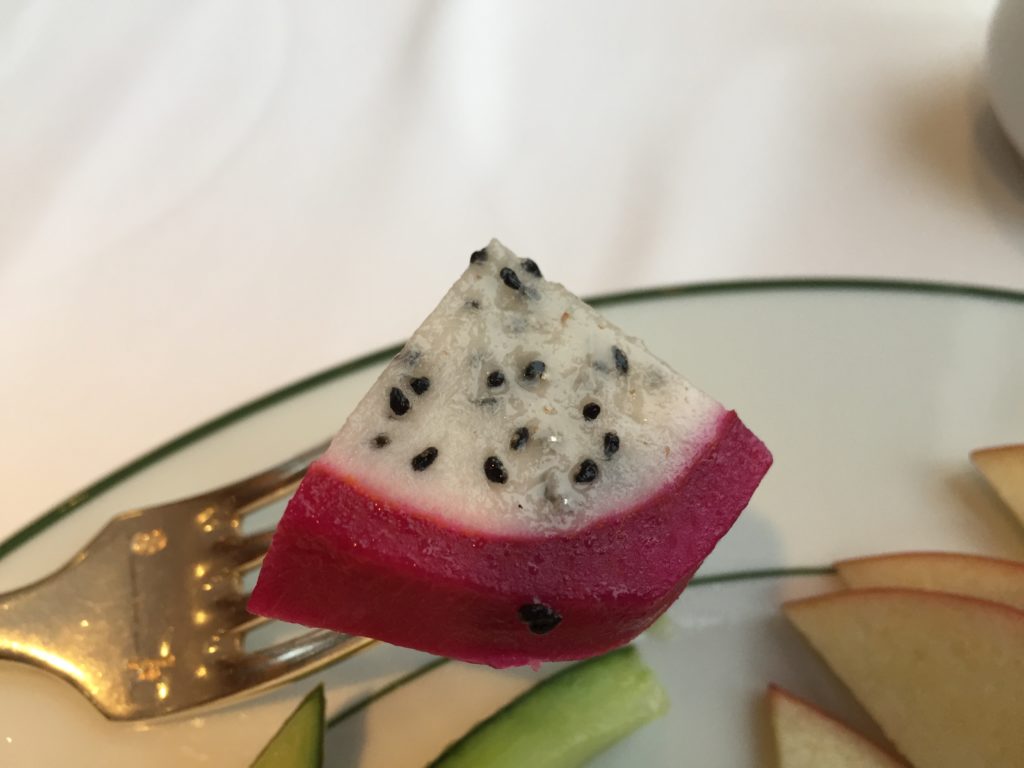
We discovered many new foods. This is dragon melon.
I had spent two summers in Japan as a teen, staying with my aunt and uncle (who flew for Japan Airlines) and my two cousins. My cousins and I traveled the country from top-to-bottom, traveling on trains and staying at youth hostels, which were wonderful. The following summer, my mother, my two younger siblings and I returned, again staying at hostels. I never wanted to leave.
My family forged strong bonds with Japan over the years. My father, an airline pilot for PanAm, flew to Tokyo regularly, bringing back intriguing treasures. My brother and his wife became importers of Japanese antiques, and their son Robert is carrying on the family business. After my father retired, my mother and father went to Japan many times with my brother and his wife in search of antiques, becoming passionate restorers of Japanese antiques and enthusiastic flea-marketers.
I wondered, returning, how much Japan would have changed in over fifty years. It turned out: not that much. It was more built up, certainly, and more modern (in delightful ways), but it still had that sense of aesthetic beauty and gracious charm I remembered so well.
I remembered being surprised as a teen at how clean, tidy and lovely the houses were that backed onto the train tracks. Were there no slums in Japan? It turned out that same is true today.
We saw few trash bins, yet not a speck of litter — or graffiti, for that matter. Japan has near to full employment and no homeless (that we could see). All this was also true fifty years ago.
Japan was remarkably safe in years past. My mother left her purse on a train — it was returned within a day. It had been handed back person to person through two trains and taken to where we were staying in a rural youth hostel. Imagine that! In our three weeks in Japan, we saw very few police, yet the country is orderly and safe.
(In fact, Japan has the lowest rate of gun violence in the developed world. Annual gun deaths are often in the single digits, compared to 33,000 annually in the US. I posted an info-video on how they manage this to Facebook here.)
But most of all, I fell in love with the Japanese aesthetic all over again. As a teen, I read Japanese writers in translation and I’m looking forward to revisiting those books once again. There is something about their spare, understated prose that I continue to aspire to. This was a trip that will stay with me for many years to come.SaveSave
SaveSave
SaveSave







 Save
Save








